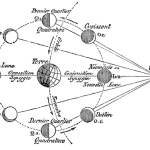More of a lifestyle than a diet, the Mediterranean diet has been linked to numerous health benefits. Centered around minimally-processed, nutrient-dense foods, the diet prioritizes fruits, vegetables, whole grains, legumes, nuts and seeds. It also includes moderate amounts of poultry, fish and dairy, and recommends limiting red meat, processed meats and added sugar.
Because animal-based proteins are more limited on a Mediterranean diet, you may be wondering how to get enough of this important nutrient. After all, protein is an essential building block for your bones, muscles, skin, hormones, enzymes and more. Luckily, legumes, like lentils and beans, are a Mediterranean diet-staple that provide ample amounts of plant-based protein.
We spoke with registered dietitians to learn why legumes are the #1 protein to eat more of on the Mediterranean diet and easy ways to add them to your diet.
Why Legumes Are So Great
Nutrient-Dense Plant-Based Protein
“Legumes like lentils, chickpeas and beans are a nutritional powerhouse!” says Ana Pruteanu, MS, RDN, CEDS-C, LDN, registered dietitian and owner of Be Well Nutrition Counseling. “They provide protein, fiber and a range of essential micronutrients — think B vitamins, iron, copper, magnesium and potassium. These nutrients play a key role in supporting your health,” she adds.
It doesn’t matter which legumes you choose – they’re all packed with protein, fiber and micronutrients. Chickpeas contain about 15 grams of protein and 13 grams of fiber per 1-cup serving, plus 20% of the daily value (DV) for iron. The same serving of lentils provides about 18 grams of protein, 16 grams of fiber and about 37% of the DV for iron.
They Support Heart Health
The high fiber content and phytochemicals found in legumes are excellent for heart health. “Research suggests that beans and legumes are beneficial for improving blood cholesterol, vascular health and chronic inflammatory markers,” says Sheri Gaw, RDN, CDCES, a California-based registered dietitian.
Routinely incorporating legumes into your diet has been linked to better heart health and a reduced risk of cardiovascular disease. Studies show that people who ate four or more servings of legumes per week had a 22% lower risk of coronary heart disease compared to those who consumed legumes less frequently.
They Help Stabilize Blood Sugar Levels
As mentioned earlier, legumes are rich in fiber and protein, two key nutrients that help promote stable blood sugar levels. Both fiber and protein slow digestion and the absorption of carbohydrates, preventing rapid spikes and crashes in blood glucose levels. This steady release of glucose provides long-lasting energy and helps reduce cravings linked to blood sugar fluctuations.
Dietary fiber intake from legumes has also been associated with improved insulin sensitivity and type 2 diabetes prevention. Research shows that replacing refined grains with legumes significantly improved markers of insulin resistance.,
They Foster a Healthy Gut
Eating legumes as part of a Mediterranean diet offers significant benefits for digestive health, thanks to their high fiber content and prebiotic properties. Prebiotic fiber, found in beans, lentils, and chickpeas, acts as fuel for beneficial gut bacteria, helping to maintain a diverse gut microbiome. A balanced microbiome plays a crucial role in digestion, immune function and even mental health.
Beyond feeding good bacteria, legumes’ soluble and insoluble fiber support regularity. Soluble fiber absorbs water and forms a gel-like substance, which can help soften stool and promote smooth digestion. Insoluble fiber adds bulk to stool, helping food move efficiently through the digestive tract and preventing constipation.
Studies suggest that a fiber-rich diet, like the Mediterranean diet, is linked to a lower risk of digestive disorders, including irritable bowel syndrome (IBS) and diverticulosis. Plus, fiber from legumes may help reduce inflammation in the gut, further supporting digestive health.
Tips to Eat More Legumes
- Use canned beans for convenience. “Canned beans are one of the most affordable and convenient sources of protein out there,” says Gaw. “I recommend adding them to soups, stews, salads, burritos, tacos and pasta sauce.” “You can even add canned beans to desserts like brownie batter or cookie dough,” Gaw adds, like in our High-Fiber Black Bean Brownies. Check out these 17 Recipes that Start with a Can of White Beans for additional inspiration.
- Use roasted chickpeas for a little crunch. Roasted chickpeas make for a satisfying (and lower-calorie) snack in place of nuts. Use leftovers to add a crunch to salads and power bowls. Craving something sweet? Try these Cinnamon-Sugar Roasted Chickpeas instead.
- Eat them in a dip. “Serve a white bean dip or hummus with a veggie tray for a delicious, high-protein snack,” says Pruteanu. Our Garlic Hummus recipe couldn’t be easier — just toss a few ingredients in the food processor and whir away! Not a fan of garlic? Try this Lemon, Mint & White Bean Dip instead. Serve these creamy dips with veggies, crackers, pita or pretzels.
- Cook dried beans in a pressure cooker. “It’s a big time saver, and the consistency of the beans is excellent,” says Melissa Altman-Traub MS, RDN, LDN, a plant-based registered dietitian. “Cooking dried beans will help reduce the amount of sodium in your diet, as canned beans often have added salt,” she adds. Try our recipe for Instant-Pot Pinto Beans.
The Bottom Line
The Mediterranean diet is a nutrient-rich eating pattern that emphasizes whole foods like fruits, vegetables, whole grains, and legumes. Legumes, in particular, are the #1 protein you should eat more of on the Mediterranean diet. In addition to plant-based protein, they’re packed with fiber and essential micronutrients to support heart, gut and metabolic health. Plus, legumes are versatile and affordable, making it easy to add more of them to your diet.







